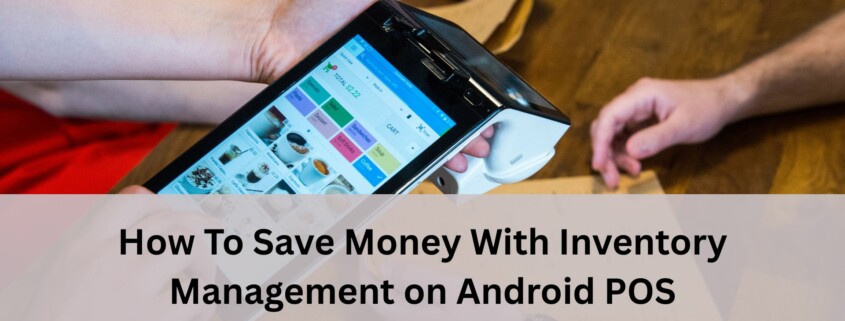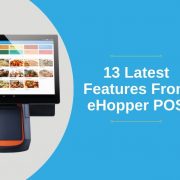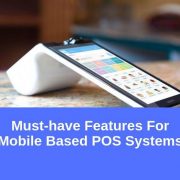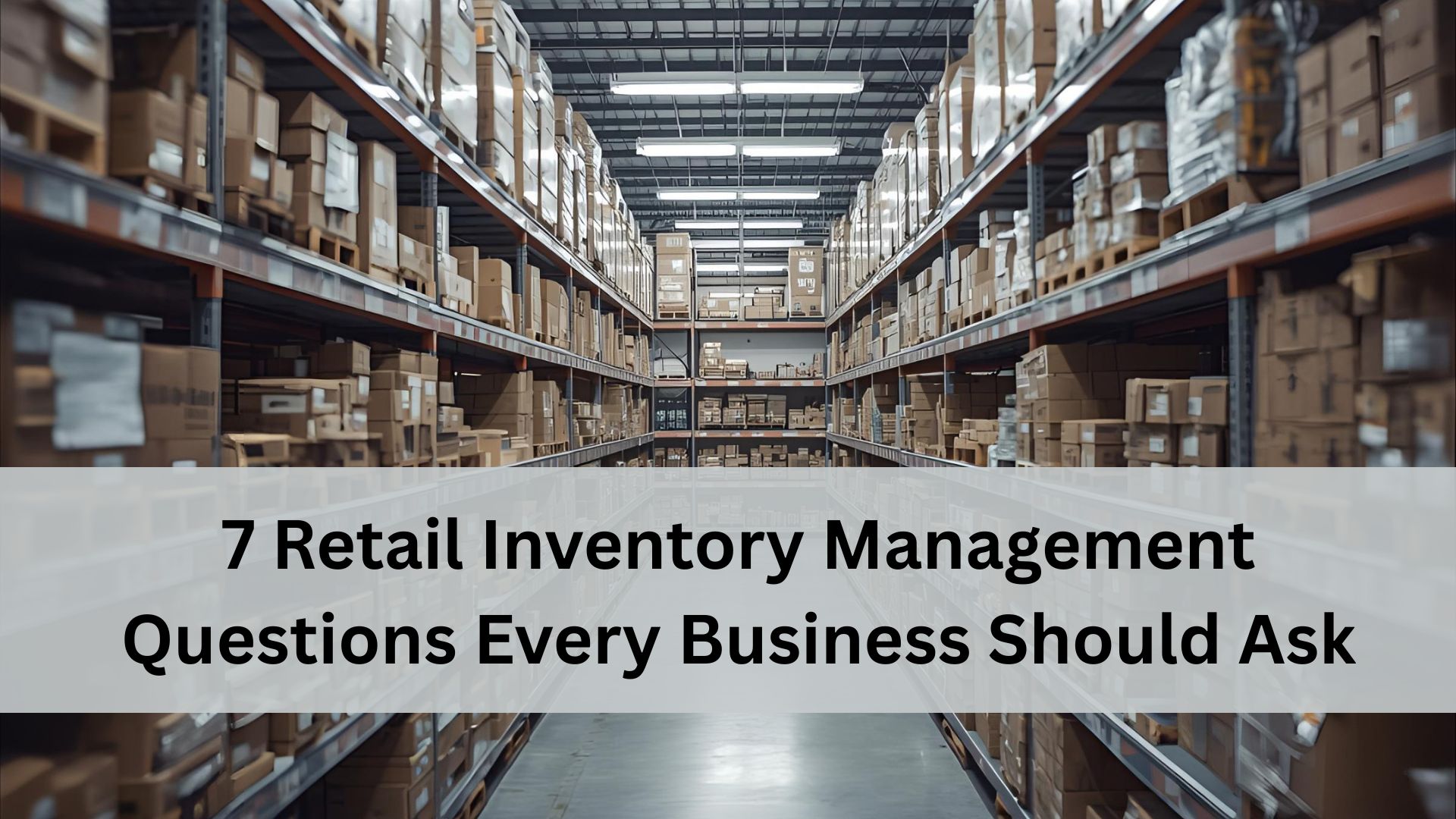How To Save Money With Inventory Management on Android POS
“Remember that time is money. He that idly loses five shillings’ worth of time loses five shillings, and might as prudently throw five shillings into the sea.” – Benjamin Franklin, Advice to a Young Tradesman (1748).
This is the first time the expression ‘time is money,’ is used; a phrase that’s seemingly even more relevant in today’s fast-paced, always-on-the-go world. At their core, every new piece of technology is designed to allow us to do more in less time.
This is exceedingly true about businesses that implement an Android POS system. Compared to the traditional POS machines, which can be clunky and slow down key processes, these mobile-enable systems are designed to make inventory management faster, easier and more accessible.
The primary function of a POS system is to enable a business to complete transactions, whether they are paid by cash, card or other means.
More advanced POS software, on the other hand, allows a company to complete a number of other key functions from the same interface, including (but not limited to) inventory and stock management, tip handling, employee management, order tracking and more.
Centralized Location For Your Inventory
Managing inventory is a time-consuming, multi-step process that involves a number of functions. You have to be aware of what you have in stock, what needs to be ordered, how fast certain items sell out and more.
Android POS system with inventory management creates the opportunity to perform any of these functions from anywhere and at any time because all of the information is available on the cloud. If you’re the type of business owner that likes to keep a tight watch on your inventory, this is unmatched availability to that information.
That said, a mobile, retail POS system’s inventory management platform does a lot more than just let you see your inventory. Otherwise, it wouldn’t be management software. You can manage inventory categories, edit prices, look at quantities and more.
Essentially, you can manage your entire store’s inventory in real-time, even when you aren’t in the store. You can even track exchanges, returns, and incoming orders. This is an essential tool for the business owner on the go.
Save Time By Importing Inventory In Bulk
Import inventory in bulk
If we refer to Benjamin Franklin’s adage about time and money, we can draw the conclusion that anything that saves you time is thereby saving money.
Ironically, this is also why many businesses avoid updating their inventory management system; they think about the enormous amount of time it will take to migrate their existing inventory records into a new system.
Arguably, many businesses choose to stay with their current, behind-the-times POS and inventory systems because they feel that the time to adapt outweighs the potential benefits of a new system.
With an Android POS system, however, making this change is simplified. Inventory files can be imported into the new environment with relative ease, as long as they are correctly named and in a .csv file format.
Not only does this simplify the initial switch to a mobile inventory management platform, but it also makes it easier to add future inventory data into the system. By eliminating the need to import inventory by hand, you are saving time (and money) now and in the future.
Manage Vendors
Choosing the right vendors to supply the right products to your stores is important. Not only should a business be concerned about the price of each item offered by a supplier, but also things like the vendor’s sustainability, accessibility, adaptability, and speed.
That’s why having an inventory management platform that allows you to track and handle receiving orders is helpful. You’ll be able to know, with greater accuracy, when shipments are arriving and how those incoming orders will affect current inventory.
Most businesses have vendors they enjoy working with and ones that they don’t. Android POS inventory management allows business owners to select multiple vendors for the same product.
This can make it easy to track and compare the performance of each vendor against one another. Not only does this help you identify the best and worst vendors on your list, but you could potentially use these insights to leverage better deals with underperforming suppliers.
Set Up Stock
A mobile-friendly, retail POS system enhances a business’ ability to handle stock, especially across multiple store locations. It is important to know how much overall stock you have, but also where that stock is and how much each store has.
Defining available stock for each store location is easy in the Android POS environment and will enable you to gain insights into what is selling best at each location. If you need to shuffle stock around, via a store-to-store transfer, you’ll know where to find the necessary stock.
Moreover, the stocking functions of this POS inventory management system also allows you to create conditions for restocking via a Minimum Quantity and Recommended Quantity. These can be defined for each store and the company as a whole.
If stock drifts below these numbers, the system knows to notify you and set up a vendor order for restocking. Having unique quantity values for each store is very helpful; stores sell different products at different rates. Thus, this function allows you to adapt the recommended amount based on how well that item sells in that particular location.
Store Transfer Tool
The store transfer tool of an Android POS system works in tandem with the functions of the above stock setup options. Again, each store location is going to sell products at a different rate, which means their backstock is going to be different from one another.
Often, it is necessary to move stock from a low-selling store to a high-selling one, especially if there isn’t an incoming receiving order with that item for some time.
Your inventory management tool needs to allow you to see stock across each store, but it also needs to make it easy to initiate store transfers. The faster you can get a product to where it is needed most, the more you can sell.
Full Visibility With Product Mix Report
Successfully managing inventory is as much about learning as it is handling orders and your stock. In other words, the more you know about how products are selling, what you are spending, what you are making and so on, the better you (and your company) will become at managing business operations. A product mix report is an essential tool to aid you in the always-present task of learning about your inventory.
The reporting capabilities of an Android POS system allows you to monitor a number of figures, such as product stock quantity, gross and net sales, how much taxes paid, the number of items sold and where and much, much more.
There are a number of insights you can gain from monitoring your tracking report. You can look at specific periods of time to understand when certain products are most popular. Alternatively, you could track the quantity of stock over a period, to better predict when you need to replenish your inventory.
Synchronize Inventory With QuickBooks
Many companies rely on QuickBooks accounting software to handle the financial side of their business. Thus, it is critical for your POS inventory management tool to integrate with QuickBooks for fast and seamless importing of your transactional data.
There’s no manual data entry involved, and you can even create separate financial reports for each one of your stores. Or, look at how much you are spending with each vendor.
Integrating your inventory and sales data into the QuickBooks platform creates a complete view of your businesses finances. You can track how every dollar is being spent and earned and map it alongside your bank statements.
This makes it incredibly easy to view and evaluate the overall health of your business and its bottom line. Routinely using and monitoring these QuickBooks reports can help you identify problematic areas of spending before they become a bigger problem.
Another pearl of wisdom by Benjamin Franklin is to, “Beware of little expenses. A small leak will sink a great ship.”
Syncing your inventory with QuickBooks greatly ensures that any small leaks will be caught and fixed quickly, thereby improving the longevity of your business.
Conclusions
Inventory management is a multi-faceted process. It starts with handing vendors and placing orders and ends with the monitoring and integration of financial, accounting data. The various stages of retail inventory management make it a time-consuming operation.
That’s why a mobile POS inventory management system is incredibly valuable. It helps streamline each of these processes to save you time, money and resources.
You shouldn’t be losing out because of an outdated inventory system that slows your productivity and ability to get products into the hands of consumers looking for those items. Instead, consider upgrading to your retail POS system to include a mobile inventory solution.
If you’re ready to improve your business’ inventory management processes, get started with eHopper POS system today!









Leave a Reply
Want to join the discussion?Feel free to contribute!